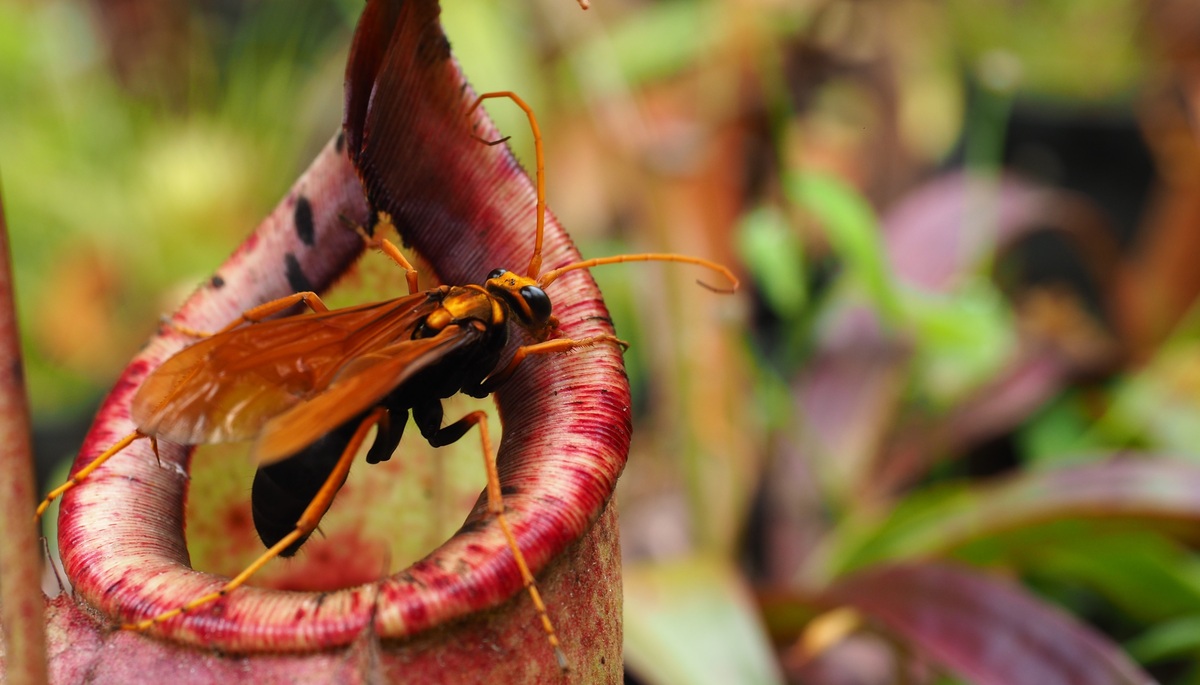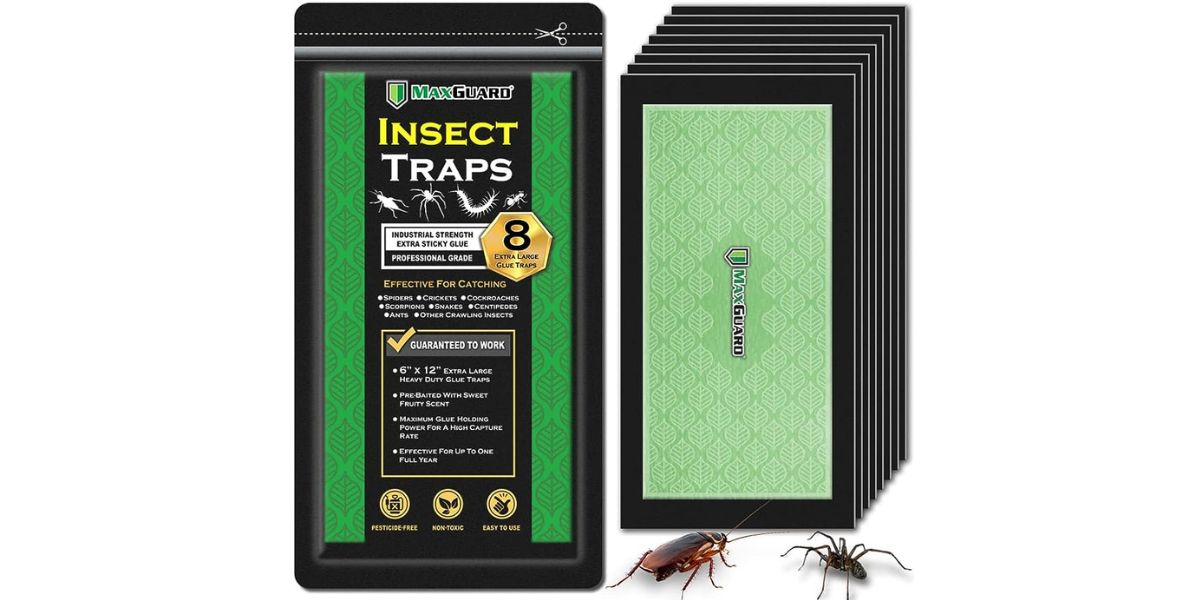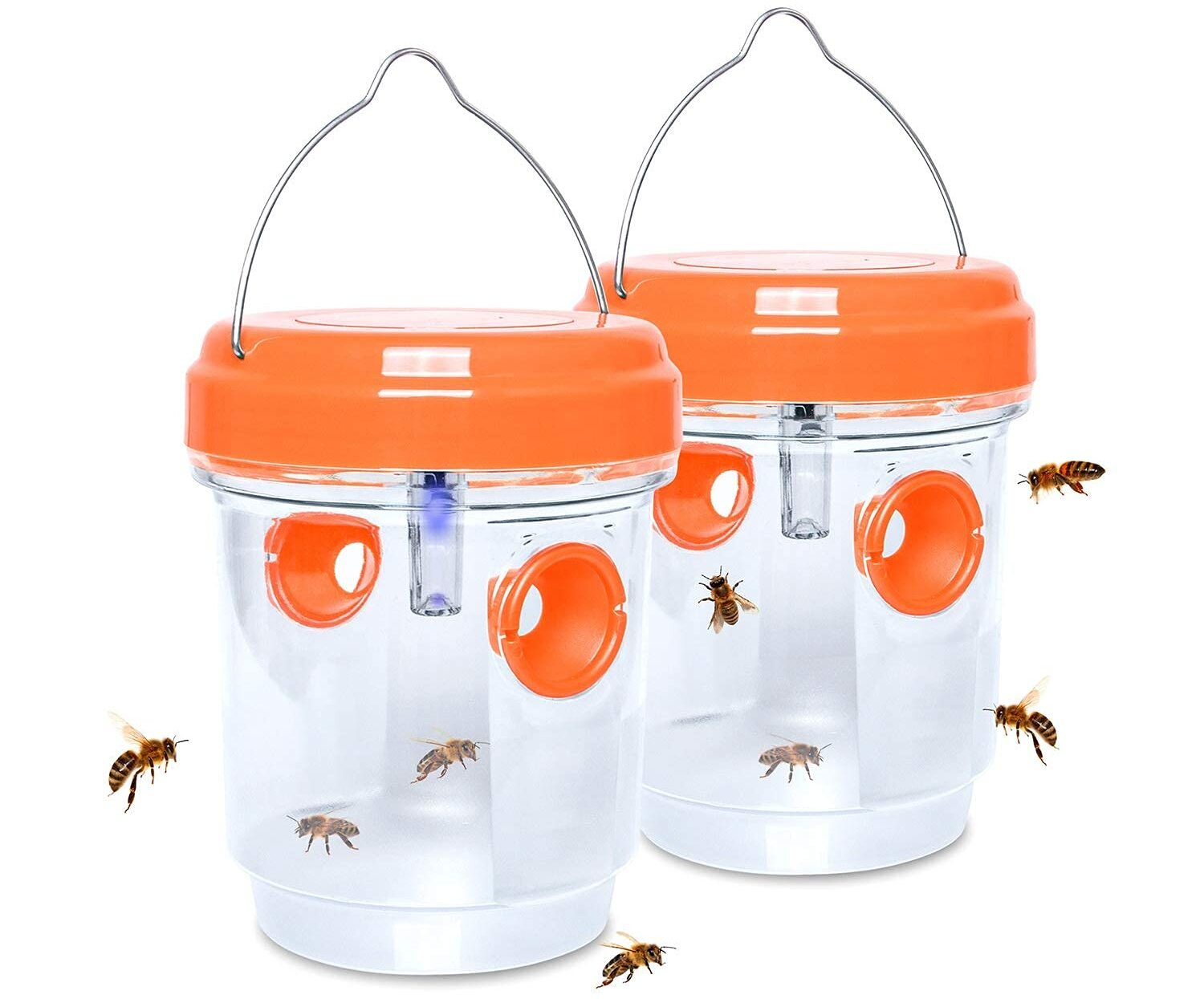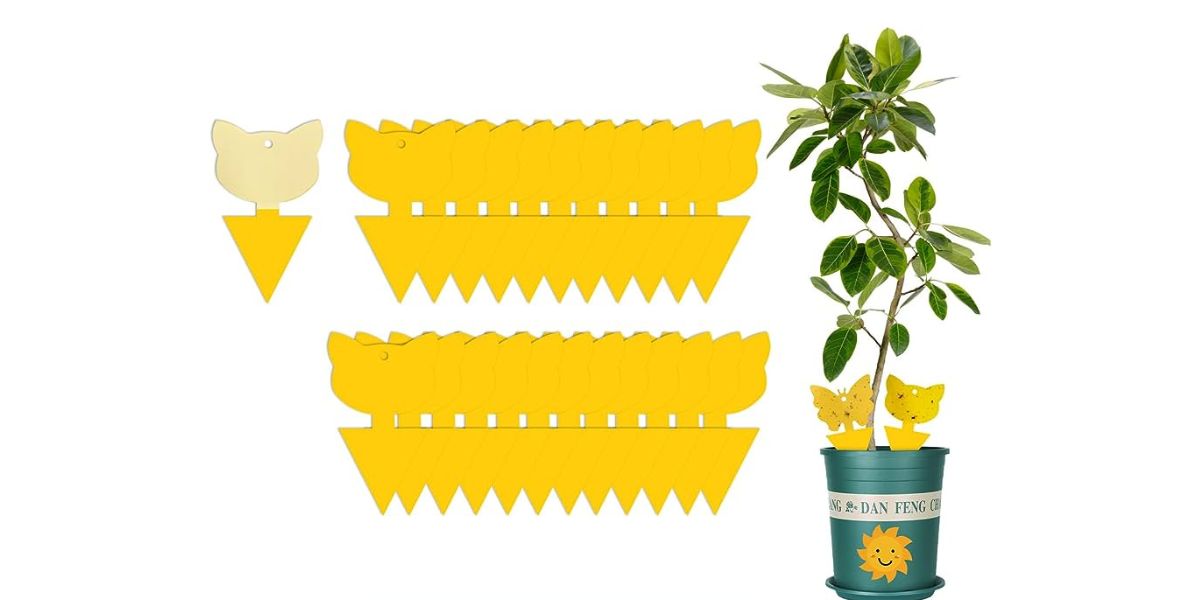Home>Gardening News and Trends>Latest News>How Does Pitcher Plant Trap Insects


Latest News
How Does Pitcher Plant Trap Insects
Modified: January 22, 2024
Want to know how pitcher plants trap insects? Read our latest news article to discover the fascinating mechanism behind this unique survival tactic.
(Many of the links in this article redirect to a specific reviewed product. Your purchase of these products through affiliate links helps to generate commission for Chicagolandgardening.com, at no extra cost. Learn more)
Table of Contents
Introduction
Pitcher plants are fascinating carnivorous plants that have evolved unique mechanisms to trap and consume insects. These plants belong to the family Nepenthaceae and are known for their distinctive pitcher-shaped leaves. With their intricate traps and enticing nectar, pitcher plants have become the subject of curiosity and wonder.
Unlike other plants that solely rely on photosynthesis for energy, pitcher plants have adapted to nutrient-poor environments by supplementing their diet with insects. Their specialized traps enable them to lure, capture, and digest insects, providing them with essential nutrients they can’t obtain from the soil alone.
The extraordinary nature of pitcher plants has made them a popular subject of research and a source of inspiration for scientists and nature enthusiasts alike. In this article, we will delve into the fascinating world of pitcher plants, exploring their unique structure, mechanisms of insect trapping, digestion process, and the benefits they derive from consuming insects.
Join us as we uncover the mysteries behind these remarkable plants and discover the intricate strategies they employ to survive in their challenging environments.
What is a Pitcher Plant?
Pitcher plants are a type of carnivorous plant that are known for their distinctive pitcher-shaped leaves. These plants belong to the family Nepenthaceae and are typically found in regions with nutrient-poor soils, such as bogs, marshes, and rainforests. The pitcher-shaped leaves of these plants are modified into specialized traps that lure and capture insects.
The unique morphology of pitcher plants makes them instantly recognizable. The leaves form a deep, tube-like structure that resembles a pitcher, hence their name. At the top of the pitcher, there is a lid or hood known as the operculum, which serves to prevent rainwater from diluting the digestive fluids inside the trap. The opening of the pitcher is lined with a slipper-like structure called the peristome, which provides a slippery slope for insects to fall into the pitcher.
Pitcher plants come in a variety of shapes, sizes, and colors. Some species have long, slender pitchers, while others have wide, bulbous ones. The coloration of the pitchers can range from green to red, and some even have intricate patterns or stripes that aid in attracting their prey.
As carnivorous plants, pitcher plants have evolved to supplement their nutrient intake by trapping and digesting insects. This adaptation allows them to thrive in environments where the soil lacks essential nutrients. By consuming insects, pitcher plants are able to extract vital nutrients like nitrogen and phosphorous, which are crucial for their growth and survival.
Overall, pitcher plants are not only captivating to observe but also play an important role in maintaining ecosystem balance. They are a testament to the diverse and remarkable ways in which plants have evolved to adapt to their surroundings, and they continue to intrigue scientists and nature enthusiasts around the world.
Structure of Pitcher Plants
The structure of pitcher plants is truly remarkable and serves a crucial role in their predatory nature. These fascinating plants have evolved specialized leaves that form unique pitcher-shaped structures, designed to trap and digest insects.
The pitcher of a pitcher plant is a tubular or funnel-shaped structure, often filled with a liquid that attracts and drowns unsuspecting insects. The size and shape of the pitcher can vary greatly depending on the species, ranging from a few centimeters to over half a meter in length. The walls of the pitcher are typically smooth and slippery, ensuring that once an insect falls in, it is unable to climb out.
At the top of the pitcher is a lid, known as the operculum, which functions to protect the inside of the pitcher from rainwater and other debris. The operculum also helps regulate the amount of light that enters the pitcher, as some species of pitcher plants prefer dimly lit environments.
One of the most distinctive features of the pitcher plant is the peristome, which is located around the opening of the pitcher. The peristome is a specialized structure that aids in attracting and trapping insects. It is often brightly colored, with patterns or markings that serve as visual cues to lure unsuspecting prey. Additionally, the peristome is lined with a slippery wax-like substance, making it difficult for insects to gain traction and escape.
Inside the pitcher, there are glands that secrete a mixture of enzymes and other chemicals. This fluid serves two main purposes: to drown the captured insects and to break them down for digestion. The enzymes within the pitcher break down the proteins and other organic matter of the trapped prey, providing the pitcher plant with vital nutrients it cannot obtain from the soil alone.
Overall, the structure of pitcher plants is a remarkable adaptation that allows these carnivorous plants to effectively attract, capture, and digest insects. Through their unique morphology and clever trapping mechanisms, pitcher plants have truly mastered the art of survival in nutrient-poor environments.
Mechanism of Insect Trapping
Pitcher plants employ a variety of remarkable mechanisms to effectively trap insects and ensure a steady supply of nutrients. The intricate interplay of odor, color, and structure allows these carnivorous plants to lure unsuspecting insects into their deadly traps.
One of the key elements in the trapping mechanism of pitcher plants is the production of attractive scents and nectar. Many species of pitcher plants emit a sweet, enticing odor that mimics the scent of flowers or ripe fruits. This aroma acts as a potent attractant, luring insects towards the pitcher. In addition to scent, pitcher plants also produce nectar, which is secreted around the peristome or within the pitcher itself. This sugary reward serves as a tantalizing incentive to entice insects to explore further into the trap.
The coloration of pitcher plants also plays a vital role in attracting insects. Some species have brightly colored pitchers or lids, which act as visual cues to draw prey towards the trap. These colors can range from red, purple, and pink to green or yellow, depending on the species. The vibrant hues, often accompanied by striking patterns or markings, help the plant stand out in its surroundings and pique the curiosity of passing insects.
The shape and texture of the pitcher also aid in trapping insects. The slippery inner walls of the pitcher, combined with the presence of small downward-pointing hairs or scales, make it difficult for insects to escape once they enter. Insects, attracted by the scent and visual cues, find themselves slipping and falling into the liquid-filled bottom of the pitcher.
Once an insect has fallen into the trap, it becomes submerged in the liquid inside the pitcher. This liquid serves multiple purposes. Firstly, it drowns the trapped insect, ensuring that it cannot escape. Secondly, the liquid contains a variety of digestive enzymes and other chemicals that aid in breaking down the insect’s exoskeleton and organic matter.
The combination of scent, color, and structure creates an irresistible trap for unsuspecting insects. As they investigate the enticing scent and nectar, they unwittingly fall prey to the pitcher plant’s sophisticated trapping mechanisms.
In the next section, we will explore the fascinating process of digestion that takes place within the pitcher plant.
Attraction Techniques of Pitcher Plants
Pitcher plants have evolved a remarkable array of attraction techniques to lure insects into their deadly traps. These techniques involve a combination of visual, olfactory, and tactile cues that exploit the sensory preferences of their potential prey.
One of the most effective attraction techniques employed by pitcher plants is the production of enticing scents. Many species of pitcher plants emit a sweet, aromatic odor that resembles the scent of flowers or ripe fruits. This scent acts as a powerful attractant, drawing insects towards the plant. The exact composition of the scent can vary between species, with some emitting a pleasant fragrance and others emitting an odor that is more pungent or musky in nature.
In addition to scent, pitcher plants also utilize visual cues to entice insects. Some species have vibrant and contrasting colorations, such as bright reds or purples, which act as visual beacons to attract passing insects. The colored surfaces of the pitchers may also feature intricate patterns or markings that further enhance their allure. These visual cues are designed to catch the attention of insects and serve as a signal that food is nearby.
Alongside scent and color, the texture of the pitcher plant’s surface can also play a role in attracting insects. Certain species have specialized glands that secrete a sticky or slimy substance, creating a tactile trap for insects that come into contact with it. This sticky surface acts as an additional deterrent, making it even more difficult for the insects to escape once they are lured into the trap.
Another interesting attraction technique employed by some pitcher plants is the presence of specialized appendages or structures that mimic the appearance of prey or inviting niches for insects. These structures can resemble small pheromone-producing glands, insect larvae, or even escape routes for trapped insects. By mimicking these enticing elements, pitcher plants are able to trick insects into approaching and ultimately falling victim to their traps.
By combining these attraction techniques, pitcher plants are able to effectively lure a wide range of insects into their deadly traps. The enticing scents, vibrant colors, tactile surfaces, and even deceptive structures work together to exploit the sensory preferences and instincts of potential prey.
In the next section, we will explore the fascinating process of digestion that occurs within the pitcher plant, allowing it to extract vital nutrients from the captured insects.
Digestion Process in Pitcher Plants
The digestion process in pitcher plants is a fascinating and complex phenomenon that allows these carnivorous plants to extract nutrients from the insects they capture. Once an insect has fallen into the pitcher and become submerged in the liquid-filled trap, the digestion process begins.
Within the pitcher, there are glands that secrete a mixture of enzymes and other chemicals. These enzymes break down the proteins, fats, and other organic materials of the trapped prey, essentially turning them into a nutrient-rich soup. The enzymes secreted by pitcher plants are similar to those found in the digestive systems of animals and work in a similar way. They include proteases to break down proteins, lipases to break down fats, and carbohydrases to break down carbohydrates.
The liquid inside the pitcher is acidic, with a pH ranging from 2 to 5, which helps to activate the digestive enzymes and facilitate the breakdown of the prey. This acidic environment is maintained by the secretions of the pitcher plant and serves to further enhance the digestion process.
The breakdown of the insect’s body releases valuable nutrients that the pitcher plant can absorb. These nutrients include nitrogen, phosphorous, and other minerals essential for the plant’s growth and development. In nutrient-poor environments where pitcher plants typically thrive, this ability to extract nutrients from insects provides them with a distinct advantage over other plants that rely solely on the soil for nutrition.
The digestion process within the pitcher can take anywhere from a few days to several weeks, depending on the size and composition of the prey. Once digestion is complete, the leftover exoskeleton and any insoluble materials are typically expelled from the pitcher.
It is worth noting that not all insects that fall into the pitcher become prey for the pitcher plant. Some insects are able to escape through the slippery walls of the pitcher or fly away before being submerged in the liquid. However, many insects are not as fortunate and end up becoming a vital source of nutrients for the plant.
The digestion process in pitcher plants is a remarkable demonstration of the plant kingdom’s adaptation to nutrient-poor environments. By being able to extract nutrients from captured insects, pitcher plants have evolved a unique and efficient method of supplementing their nutrient intake and ensuring their survival.
In the next section, we will explore the benefits of insect consumption for pitcher plants and their role in the ecosystem.
Benefit of Insect Consumption for Pitcher Plants
Insect consumption plays a crucial role in the survival and overall health of pitcher plants. By supplementing their diet with insects, pitcher plants derive several important benefits that allow them to thrive in nutrient-poor environments.
One of the primary benefits of insect consumption for pitcher plants is the access to essential nutrients. Nutrient-poor soils, such as those found in bogs or rainforests, often lack sufficient levels of nitrogen, phosphorus, and other minerals necessary for plant growth. By capturing and digesting insects, pitcher plants are able to obtain these vital nutrients, ensuring their ability to carry out essential biological processes such as growth, reproduction, and defense against diseases.
Moreover, the consumption of insects provides pitcher plants with a source of energy. While most plants rely solely on photosynthesis to generate energy, pitcher plants have evolved to supplement their energy needs through carnivory. This ability to derive energy from insects allows pitcher plants to thrive in environments where sunlight may be limited or where other sources of energy are scarce.
Another benefit of insect consumption is the removal of potentially harmful or competing organisms from the pitcher plant’s environment. By trapping and consuming insects, pitcher plants can reduce the population of pest species that could harm the plant or compete with it for resources. This selective predation helps maintain the balance within the ecosystem and contributes to the overall health of the plant and the surrounding plant and animal communities.
In addition to the nutritional and ecological benefits, the process of capturing and digesting insects also aids in the reproduction of pitcher plants. Some species of pitcher plants rely on insects, particularly flying insects, to aid in pollination. By attracting and capturing these insects in their traps, pitcher plants increase their chances of successful pollination, leading to the production of viable seeds and the continuation of their species.
It is important to note that not all pitcher plants rely solely on insects for nutrition. Some species also have adaptations that enable them to capture other small organisms, such as spiders, small frogs, or even small mammals. These additional food sources further contribute to the overall well-being and survival of these extraordinary plants.
Overall, the consumption of insects provides pitcher plants with essential nutrients, energy, protection against pests, and reproductive advantages. These benefits are essential for pitcher plants to thrive and adapt in environments where resources are scarce. The ability to add variety to their diet by capturing a range of organisms sets pitcher plants apart as remarkable examples of carnivorous plants.
In the next section, we will delve into some additional interesting facts about pitcher plants that highlight their uniqueness and diversity in the plant kingdom.
Other Interesting Facts about Pitcher Plants
Pitcher plants are not only fascinating for their carnivorous behavior, but they also possess several other unique and interesting characteristics that make them stand out in the plant kingdom. Here are some noteworthy facts about pitcher plants:
- Pitcher plants are found in various parts of the world, including Southeast Asia, Australia, and North America. There are over 150 known species, each with its own distinct adaptations and trapping mechanisms.
- Some species of pitcher plants have evolved symbiotic relationships with ants. In exchange for shelter and food, the ants provide protection by removing potential predators and competing insects from the pitcher plant’s environment.
- Pitcher plants have different strategies for attracting their prey. While some species rely on scent and visual cues, others actively produce vibrations to mimic the movements of trapped insects, luring in curious prey.
- Some pitcher plants have the ability to absorb atmospheric nitrogen through specialized structures called “ornamentation.” This adaptation allows them to supplement their nitrogen intake, which is crucial for their growth and reproductive success.
- The giant montane pitcher plant, Nepenthes rajah, holds the record for having the largest pitcher among all pitcher plant species. Its pitchers can reach up to 40 cm (15.7 inches) in height and can even trap small mammals or birds.
- Pitcher plants often have intricate relationships with insect communities. They provide habitats and a source of food for a range of specialized insect species, including pitcher plant mosquitoes, which have adapted to breed exclusively in the water-filled pitchers.
- Several species of pitcher plants produce beautiful and fragrant flowers that attract pollinators, including bees, butterflies, and even bats. The flowers serve as the plant’s reproductive structures and are essential for their successful reproduction.
- Pitcher plants have long been a subject of fascination and inspiration in various cultures. They have been featured in literature, art, and even folklore, where they are sometimes associated with mystical or supernatural properties.
These unique and diverse characteristics highlight the extraordinary nature of pitcher plants. From their diverse trapping mechanisms to their symbiotic relationships and impressive adaptations, pitcher plants continue to captivate and intrigue scientists and nature enthusiasts alike.
Now that we have explored the many interesting facets of pitcher plants, it is evident that these carnivorous plants are truly remarkable examples of nature’s ingenuity and complexity.
Conclusion
Pitcher plants are extraordinary and captivating examples of nature’s ingenuity. These carnivorous plants have evolved unique structures, mechanisms, and strategies to lure, capture, and digest insects, allowing them to thrive in nutrient-poor environments. Through the production of enticing scents, vibrant colors, and specialized trapping mechanisms, pitcher plants entice unsuspecting insects into their deadly traps, where they are digested, providing essential nutrients and energy.
The ability of pitcher plants to consume insects not only allows them to supplement their nutrient intake but also aids in the removal of potential pests and competing organisms from their environment. This selective predation helps maintain ecosystem balance and contributes to the overall health of the plant and surrounding plant and animal communities. Additionally, the consumption of insects plays a vital role in the reproduction of pitcher plants, as it aids in pollination and seed production.
Pitcher plants exhibit a remarkable diversity in their structures and adaptations, with various species found across different regions of the world. Their striking appearance, intricate relationships with insects, and impressive adaptations have made them a subject of fascination for scientists and nature enthusiasts alike.
By delving into the structure, mechanisms, digestion process, and unique characteristics of pitcher plants, we gain a deeper appreciation for their complexity and the incredible ways in which they have adapted to their challenging environments.
Next time you encounter a pitcher plant, take a moment to marvel at its elegant pitcher-shaped leaves and consider the elaborate strategies it employs to survive and thrive. These carnivorous wonders of the plant world continue to remind us of nature’s boundless creativity and the remarkable diversity of life on our planet.








